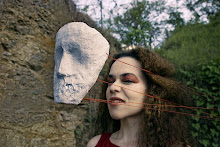I moved islands when I was born; I was placed in the belly of Motor Vessel (M.V) Edwina and headed south. She was red and long, white chairs lined her deck, putrid smoke exited her exhausts. When I was fifteen, she* was taken to the windward side of the island and sunk. They welded holes in her hull and let the bottom and stern touch sand. She stayed on Mt. Wynne’s black shore for years becoming a haven to fauna until she was labelled defunct, an eyesore. They took her out to sea and buried her along one of the deepest crevices.
In the year of our Lord, 1985, my father put me on the counter of his first ship, M.V Pattree, which had a map affixed to its surface. It was blue and white, its lines obscured by the plastic sheeting laid over it to protect it from the elements, it’s edges curled from the increasing humidity. White turning yellow: faded, crinkled and salty. The bridge affixed with the permanent scent of diesel, rust and engine oil coercing over the cabin’s façade and seeping into the very composition of the lacquered plywood and hard vinyl changing its instruction, its nature.
We were out to sea, tossed between God’s billowing waves, back and forth; into and out of the strange aqueous that was no longer sky blue and placid, but angry, vociferous and unforgiving. It was dry season because that was the only time my father would let her walls protect us, some myth about the Inter-Tropical Convergence Zone, convection and wind pressure travelling west off the coast of Africa aligning to make the conditions perfect. The converging tides pulling and pushing us North, South, East and West, all at once.
This undertow ruptures the delicate history of the archipelago, redistributing and corrupting its parts, the sea’s violence pronounced, piercing and omnipresent. It consumed my ancestors in a gulp over a century and a half ago, left them like beached whales stranded on small topographic slippages. Barren and bare, they dispersed. Journeyed to find homes that would occupy the abandoned cavity left by the emblematic surge of the sea. Ravenous; they scoured lands putting roots down; they occupied the minutiae of expanding shores, of protected ports and harbours and of elusive ground.
* A ship is always referred to in the shipping/boat/sea culture as she. One of the first plaques in my house was a riddle that asked: Why is a ship called she: Because there is always men around her. This patriarchal view of understanding sea culture, navigators, explorers, whaler-men is still pervasive throughout our culture







1 comment:
this is an amazing piece of writing...
Post a Comment